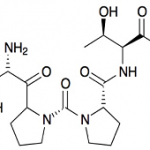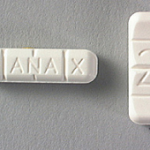The End of Wild West Addiction Treatment Centres in California

The US State of California has always been known for its slapdash attitude towards many kinds of medical remedies and addiction treatments. As far as California is concerned, addiction treatment has always been about the dollar bill.
California has for many years been the one state to visit when you suspect you have any kind of addiction. In fact, you can be treated for almost anything ranging from drug addiction to mobile phone addiction.
The Californian cult of addiction treatment seems to have been inspired by the state’s equally crazy attitude towards celebrities. Every day we seem to read about a celebrity who suffers from some kind of addiction.
Now the California State Governor Jerry Brown has financially signed a raft of bills which is set to put an end to the hippy-dippy California attitude towards addiction treatment centers.
When Treatment is Not Treatment
Many of the 2,000 so-called medical addiction treatment centers are not medical treatment centers at all. Stricter licensing has long been called for and now it appears that the state legislature is finally putting an end to hocus pocus treatments.
Practicing addiction medicine in California has been hugely popular. But the question is, how many treatment centers in California practice recognized addiction treatment?
Many of the centers base their treatments on the American Alcoholic Anonymous treatment plan which is not recognized as addiction medicine at all.
As a matter of fact, many of the “treatments” used are only successful about 10 percent of the time.
Opioid Addiction in the US
Opioid addiction in the United States has reached epidemic levels. A large number of Californian treatment centers practice what is known as “total abstinence” when it comes to any kind of addiction treatment.
Unfortunately, this approach does not really work, and the end result is often increased drug use. However, when a clinical medical approach is taken, treatment is often successful 80 – 90 percent of the time.
Compared to un-qualified medical qualified treatments, this is an astonishing number and success rate.
Trial and Error Does Not Come Into It
When it comes to addiction treatment, trial and error do not come into the picture. However, this is how many Californian medical centers approach addiction medicine. They go for the soft touch approach no matter what kind of addiction problem a person may be facing.
Sure, personalized treatments are important. But, at the same time, it is important to recognize that treatments need to be based on clinical facts. To date, many California addiction centers have treated paying “patients” as guinea pigs.
Without any clear treatment plans or access to medically qualified staff, patients have often ended up paying out huge sums of money for little or no positive results.
As many centers have no access to prescription-based medical treatments or conventional drugs to treat addiction cases, it is unclear if they are indeed treatment centers. This is what the new laws in California are meant to address.
The Cost of Addiction Treatment in California
California is often the go-to state for all kinds of addiction treatments. Costs of treatments may vary from $100 to several thousand dollars per day. Genuine medical clinics in California have long fought for a separate licensing system which recognizes them as professional medical addiction treatment centers.
Qualified addiction specialists have been concerned about the cause and effect of centers with unqualified staff which claim they can help to support and deal with addictions. Instead of reducing problems with addictions, it has long been believed many of these so-called medical centers fuel the addiction crisis instead.
It can be said that the cost of addiction treatment in California is not only financial, but it is also human. If only a very small percentage of the non-qualified medical treatments work, it makes you wonder what happens to the individuals who are on the receiving end.
Clearing Up the System
It is estimated it will take some time to clear up the Californian addiction treatment system. What we are looking at is probably the tip of the iceberg. There may be many more “addiction clinics” in California that try to pass themselves off as health spas or rehab centers.
This is a system which has been broken for a long time. Perhaps a much deeper review and further sweeping laws are needed in the future. But it is a start and many medical professionals are happy that action is finally being taken at the highest state level.






